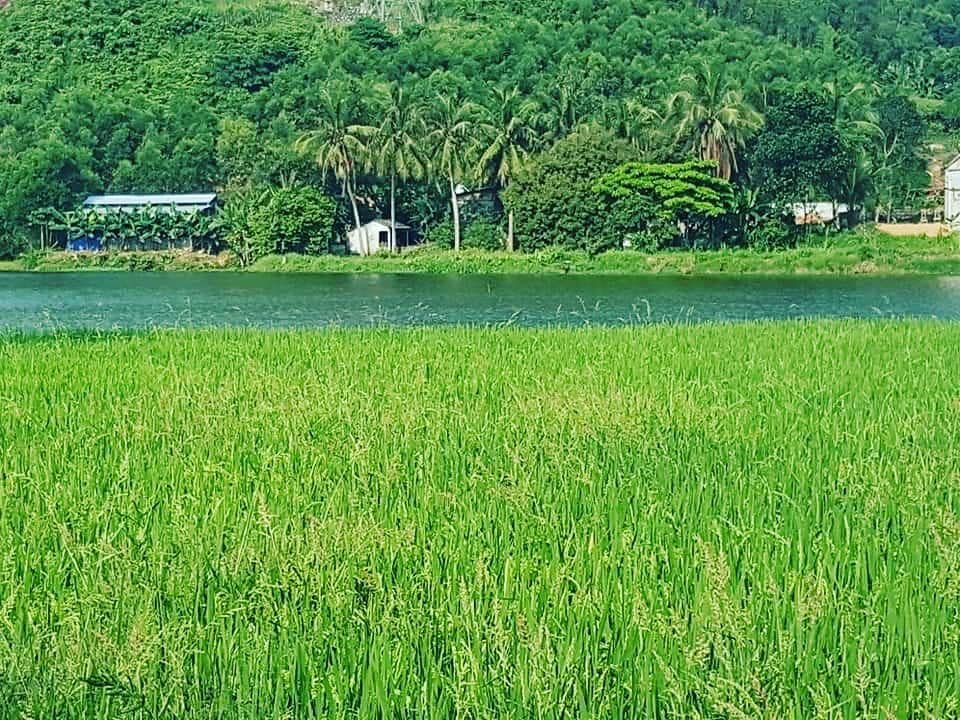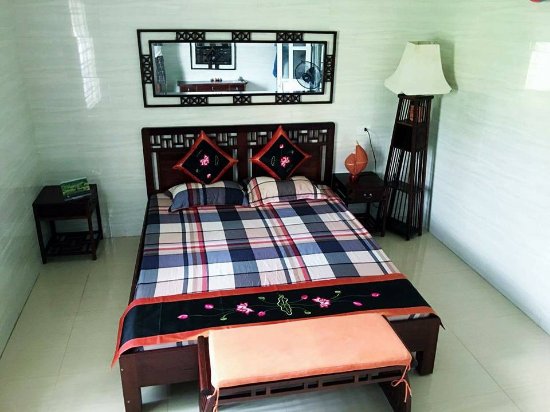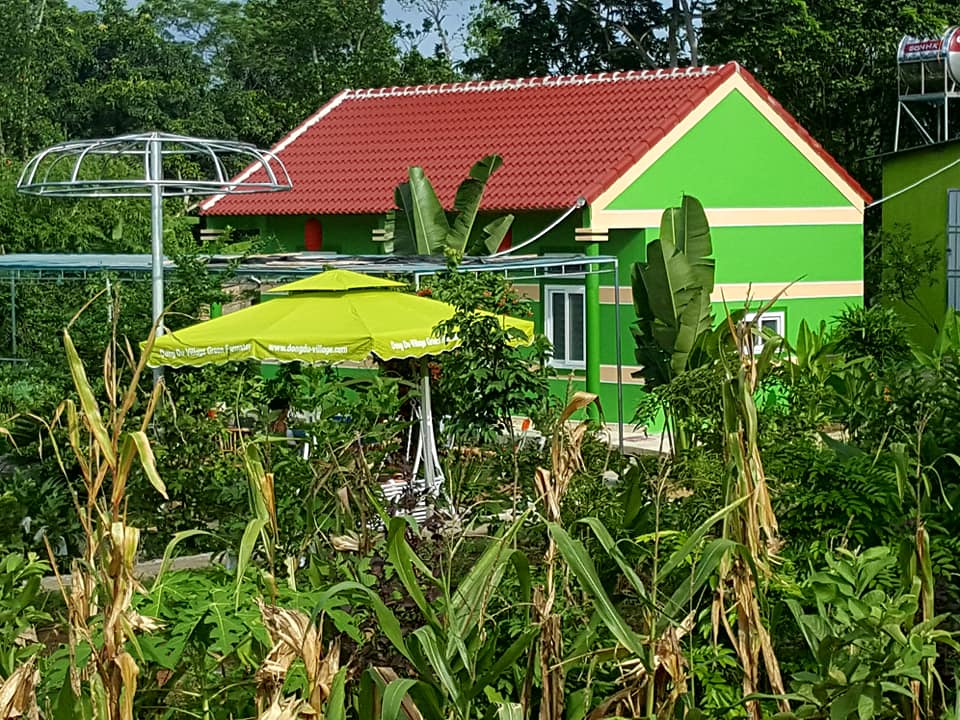Travel Blog
Dong Du Village Lakeside Farmstays
The treasure of Western Nghe An
Updated: 16/7/2018 | 4:42:13 PM
The Western Nghe An biosphere reserve is an area profoundly influenced by a northeast and southwest monsoon. The topography of the Annamite Range influences circulation of the atmosphere, which creates large climatic differences in this region. The Biosphere Reserve has area of about 1,303,285 ha, being the largest biosphere reserve in South-East Asia. Covering nine mountainous districts including Con Cuông, Anh Sơn, Tương Dương, Quế Phong, Quỳ Châu, Quỳ Hợp, Thanh Chương and Tân Kỳ, its core consists of three nationally protected areas: the Pù Mát National Park, the Pu Huong Nature Reserve, and the Pu Hoat Nature Reserve
Pu Mat National Park.
The Pu Mat Nature Reserve was gazetted in 1995 by combining two previous protected areas; Anh Son and Thanh Chuong. It’s divided into a core zone, which covers 91,200 ha, and a buffer zone extending the protected area about a further 86,000 ha. It’s situated on the eastern flanks of the Annamite (Truong Son) mountain range. The topography is strongly fragmented by many ridges making the altitude of the area varied from 200m to 1841m. The highest peak in the park is that of Pu Mat Mountain.
Decision 174 QD/TTg of 8 Nov 2001, officially declared Pu Mat a national park. The area is intended to conserve the biodiversity of the most important tropical and sub-tropical forest ecosystem in the northern Annamites. The core zone of the park covers 91,113 ha. Within its territory, 95% of the area is covered by forest vegetation.
Pu Huong Nature Reserve.
Pu Huong Nature Reserve, with an area of 5,000 ha, is located in the centre of Nghe An province. It is divided between twelve administrative communes belong to 5 districts: Cam Muon, Quang Phong communes (Que Phong district), Chau Thanh, Chau Cuong, Chau Thai communes (Quy Hop district), Chau Hoan, Dien Lam communes (Quy Chau district), Binh Chuan (Con Cuong district), and Nga My, Yen Hoa, Yen Tinh, Huu Khuong communes (Tuong Duong district). It was identified an important area for biodiversity conservation in the early 1990s and original surveys for the development of a Feasibility Study for its gazettement as a Nature Reserve were conducted by Forest Inventory and Planning Institute (FIPI) in 1994-1995. The result of the FIPI surveys was included in the 2002. Feasibility Study and Investment Plan produced as a requirement for a gazettement as a Nature Reserve (Nghe An Forest Protection Development and Nghe An People’s Committee 2002). Decision No.194/CT of 9 August 1986, officially declared Pu Huong a nature reserve. The Nature Reserve is under the management of the Nghe An People’s Committee and the Nghe An Forest Inspection Branch.
Pu Hoat Nature Reserve
Pu Hoat area is not in the list of Vietnam special-use forests system under the Decision No.194/CT dated 9 August 1986 issued by the Chairman of the Minister’s Council (Prime Minister). This area include special-use forest, protective forest in the northern of Chu river and 3 sub-area of productive forest which are written in the general economic development map of Nigh An province in 1996.
Three core zone of the proposed biosphere reserve are mentioned in “Development Strategy of Forestry Department” of Ministry of Agricultural and Rural Development. The Government approved the strategy, in which proposing to widen the area of special-use forests from 1 million ha to 2 million ha in the period 1996-2000.
Most of population in the biosphere reserve is of Thai ethnic group (68.89%) and a small number of O Du ethnic groups (0.6%). Living in 3 districts in Pù Mát National Park region belongs to 3 main ethnic groups: Thai, Kho Mu, Kinh and other ethnic groups such as: Tay, H' Mong, O Du. The population suffers the highest rate of poverty in the country.
The proposed western Nghe An Biosphere Reserve has 3 main core zones, namely Pu Mat National Park, Pu Huong Nature Reserve, Pu Hoat Nature Reserve. Therefore, histories of these lands are different. Land and forest of the core zones within the proposed biosphere reserve (Pu Mat National Park, Pu Huong Nature Reserve, Pu Hoat Nature Reserve) are owned by State. The Management Board of National Park and Nature Reserve directly manage under the guidance of Nghe An People’s Committee. In the buffer and transition zones of the proposed biosphere reserve, land is owned by community under the management of state farm and some are owned by individual and household including house, fields and gardens, farm. They are given right to use by State or fixed-term contract according to regulation of land and forest allocation.
(Source: Dong Du Village Lakeside Farmstay)
Other news
- Phu Xai Lai Leng Summit - Nghe An
- Parc national de Phong Nha – Ke Bang
- La beauté des champs de tournesols irrésistible à Nghe An
- Summer Getaway at Pu Mat National Park, Nghe An, Vietnam
- The Western Nghe An Biosphere Reserve
- Réserve naturelle de Pu Luong, trésor caché du Tonkin
- Unique homestay tours delight foreigners in Quy Chau, Nghe An Province
- New nature reserve in Nghe An, Vietnam
- Visiting Pu Mat National Park in Nghe An
- Potential and outlook of eco-tourism in Việt Nam











